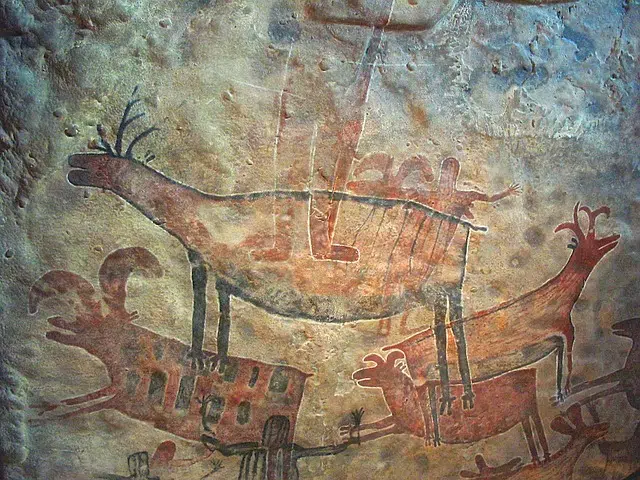
A cave painting is an artistic manifestation made in a cave or on a wall.
To understand the notion of cave painting , it is most convenient to decompose the expression into its two terms.
Paint is the material that is applied to a surface in thin layers to cover it or to create some type of drawing. The word is also used to refer to the art that consists of creating a graphic representation using pigments and other natural or artificial substances.
Rock art is that belonging to or relating to rocks . By extension, this adjective is used to name everything related to the primitive or rude world.
What is a cave painting
Having made this parenthesis, we can affirm that the concept of cave painting is used to talk about those graphic representations and drawings that are captured on rocks or caves and that were made in prehistory . Thanks to the fact that most of them are painted inside natural cavernous structures, they have managed to withstand the passage of centuries and many of them can still be seen.
Cave painting is one of the oldest artistic manifestations that exists, or rather that has been preserved. Experts in the field maintain that some cave paintings have about 40,000 years of history.
The most famous cave paintings are found in Spain and France , with the manifestations found in the Altamira Cave (in Cantabria ) being the greatest exponent of prehistoric art.
Main features
It is believed that the cave paintings were associated with certain rituals or magical beliefs to encourage hunting. That's why they show animals like bison, mammoths and deer, as well as hand marks.
The colors used in cave paintings are usually black , red , yellow and ocher , tones achieved with charcoal, minerals and various fluids.
These manifestations are proof of the intellectual capacity of humanity: in these paintings reality is represented in an abstract way.

There are cave paintings that have about 40,000 years of history.
Cave paintings in the Altamira cave
Many years passed from when the cave paintings were made until they were discovered. In Europe, its existence was only known in the mid-19th century. Previously, prehistoric artifacts made of stone and bone had been found in some caves , but cave paintings had never been found. In 1879 Marcelino Sanz de Sautuola found the first artistic manifestation of this type in the Altamira cave (Spain) : a group of bison of different colors.
The most striking thing about this discovery was that it overturned a lot of theories; The characteristics of these paintings did not coincide with the knowledge we had of primitive culture , which is why at first it was considered a fraud. However, from this discovery many others would be unleashed that would help verify the veracity of these manifestations.
This discovery marked a milestone in the sciences that study the evolution of humanity and in the notion we had about the prehistoric past in particular.
The petroglyphs
Other manifestations similar to cave paintings are petroglyphs or rock engravings . This is the name given to those images that have been carved on rocks. To make them, stone pointers and tools made especially for that task were used. However, no evidence of these tools survives, so there is no clear idea of how these engravings were made.
Within the petroglyphs there is a great variety of designs: spirals, circles, rows, triangles and squares. Which are extremely striking, taking into account that they were designed before the notion of geometric shapes existed, not to mention the complexity of these compositions.
